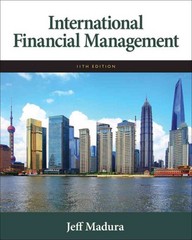Answered step by step
Verified Expert Solution
Question
1 Approved Answer
eBook Problem 7-09 Suppose that you have estimated the FamaFrench three-factor and four-factor models for three different stocks: BCD, FGH, and JKL. Specifically, using return
| eBook Problem 7-09 Suppose that you have estimated the FamaFrench three-factor and four-factor models for three different stocks: BCD, FGH, and JKL. Specifically, using return data from 2005 to 2009, the following equations were estimated:
| ||||||||||||||||||||||||||||||||||||||||||||||||||||||||||||
Step by Step Solution
There are 3 Steps involved in it
Step: 1

Get Instant Access to Expert-Tailored Solutions
See step-by-step solutions with expert insights and AI powered tools for academic success
Step: 2

Step: 3

Ace Your Homework with AI
Get the answers you need in no time with our AI-driven, step-by-step assistance
Get Started


